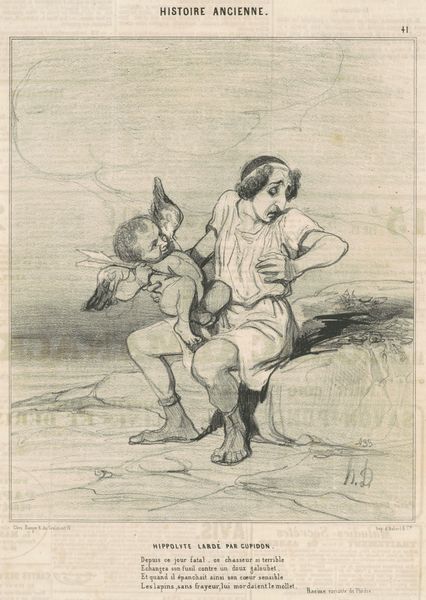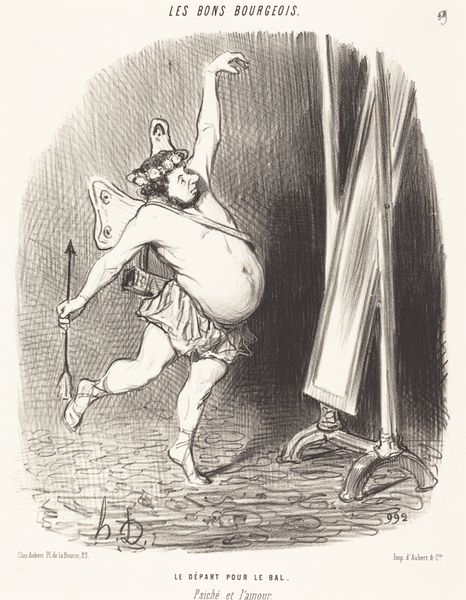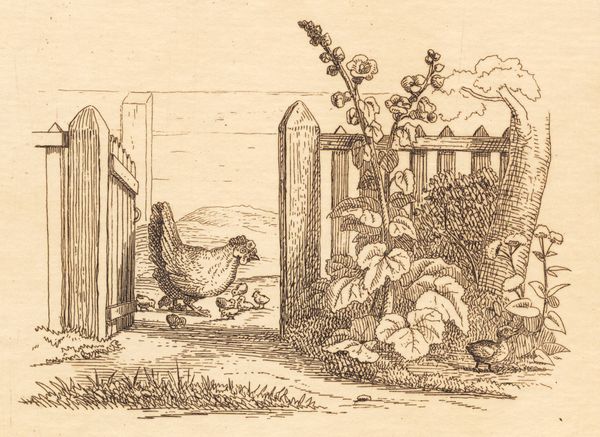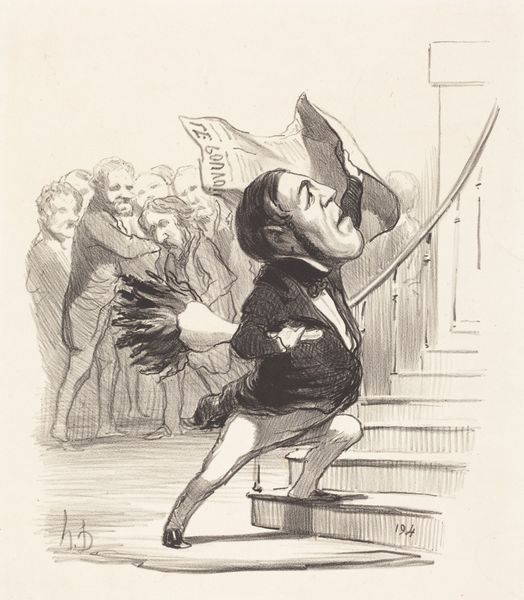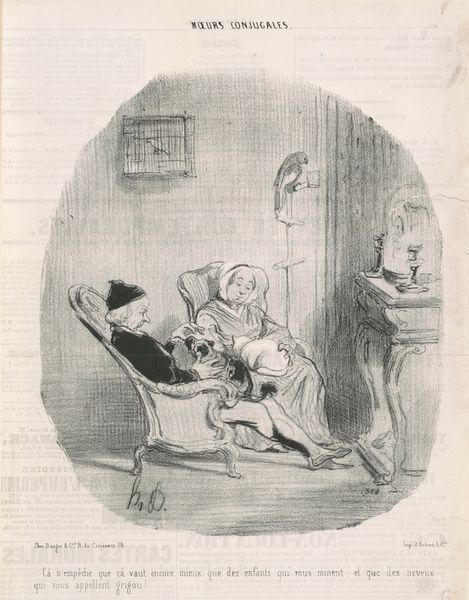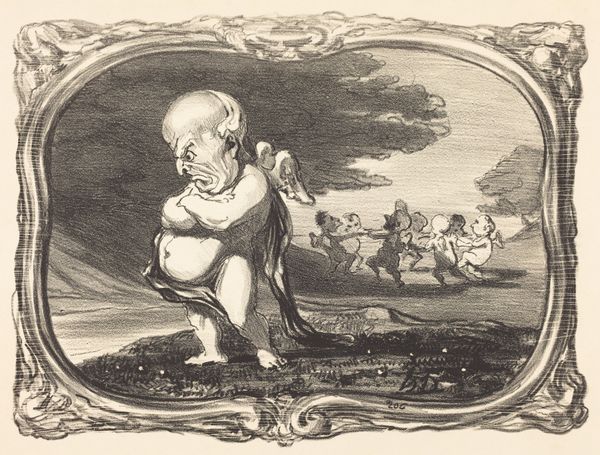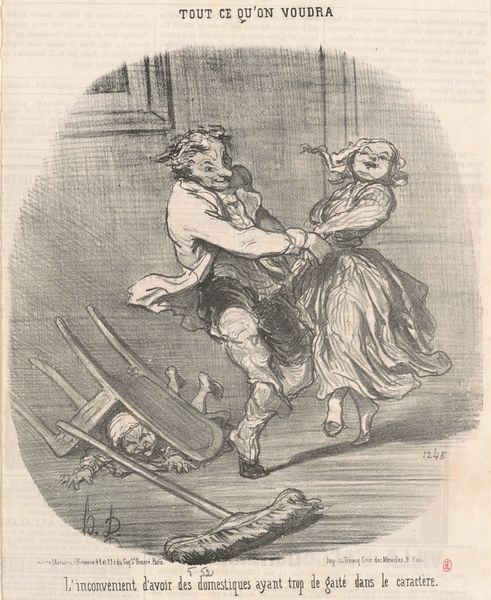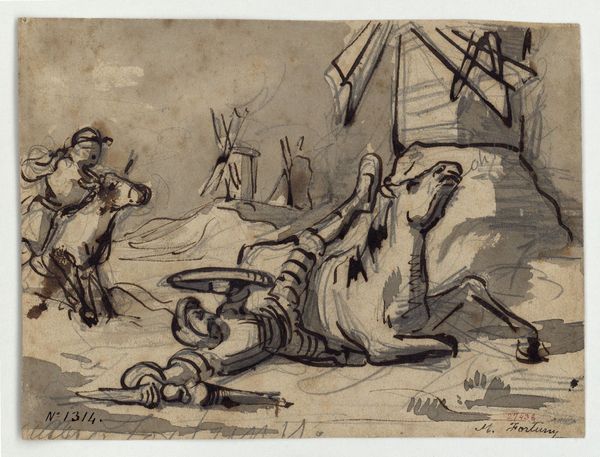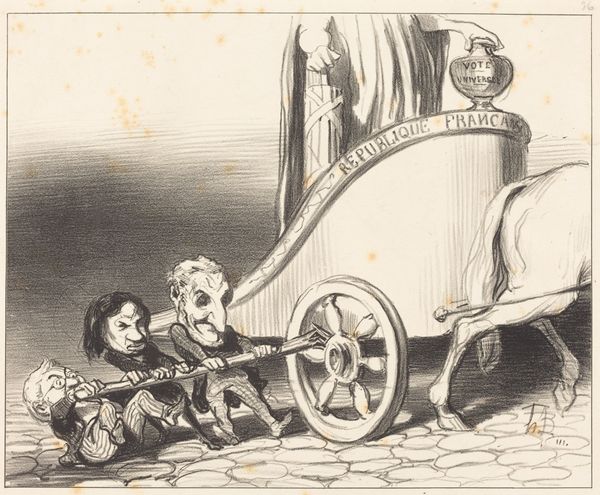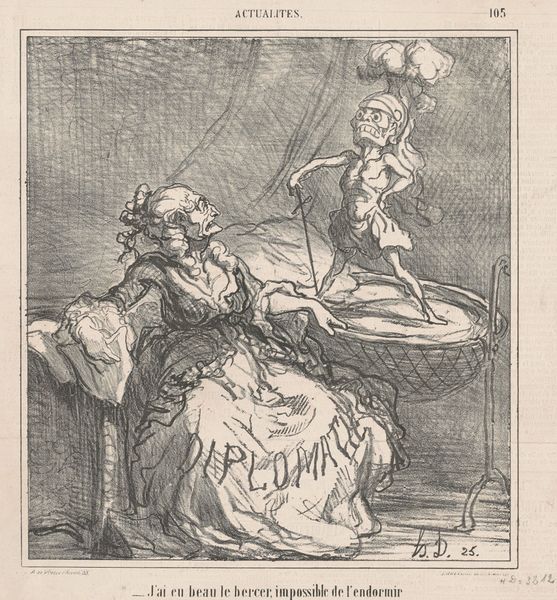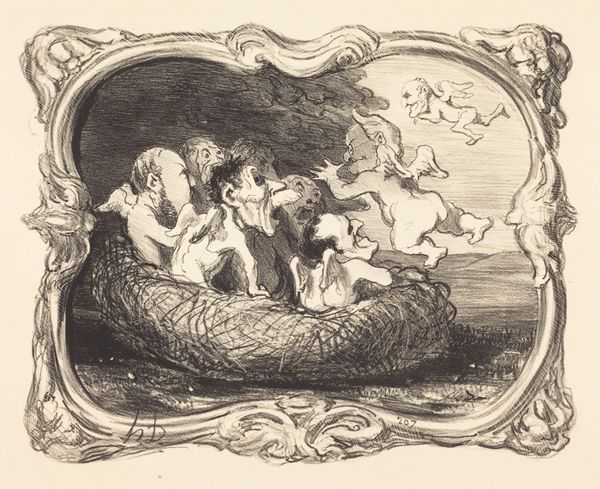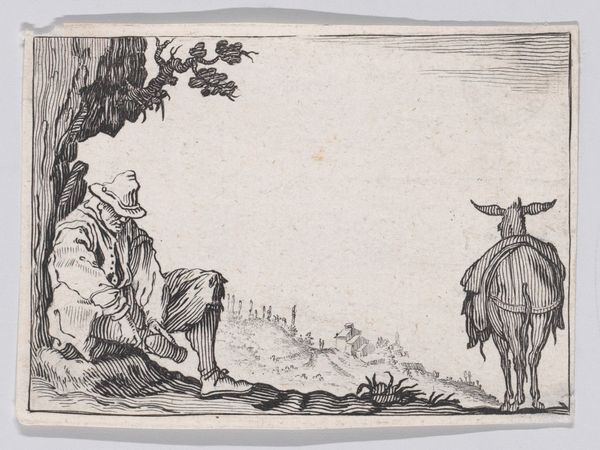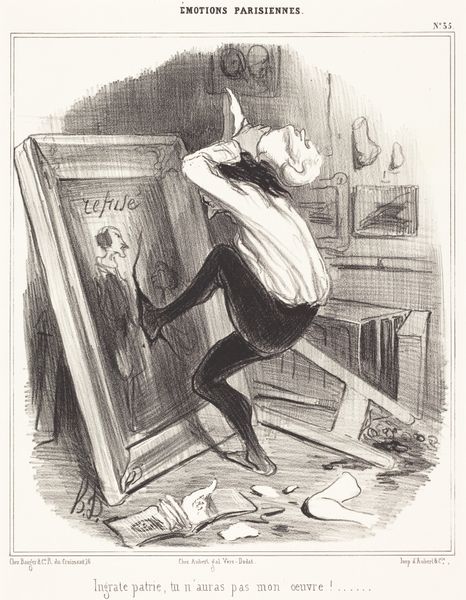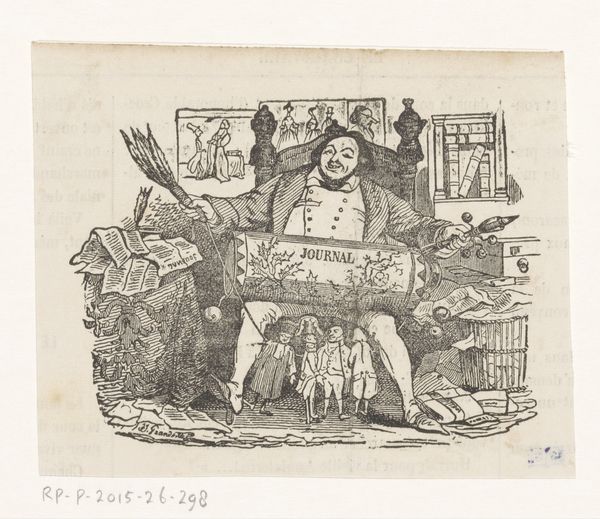
Copyright: National Gallery of Art: CC0 1.0
Editor: So this is Honoré Daumier’s 1851 lithograph, "Les Malheurs du chimiste Dumas," or "The Misfortunes of Chemist Dumas." It's quite the bizarre scene—a winged figure that looks like a caricature emerging from what appears to be a prison. What compositional elements stand out to you? Curator: Immediately, the tension between figuration and abstraction arrests the gaze. Note how Daumier meticulously renders the corpulent figure, the titular Dumas, contrasting starkly with the stylized cage in the backdrop, composed of an almost minimalist arrangement of vertical bars. It invites us to examine how Daumier has played with light and shadow to emphasize the contours of the human form against a geometric framework. Observe the artist’s line-making as the wings suggest motion away from the prison setting, but with great difficulty and seemingly against his will, a push-and-pull effect that creates pictorial interest. Editor: So the contrast is central. Does this imply that Daumier is setting up some sort of conceptual opposition? Curator: Precisely. The lithograph teases the eye. Consider the foregrounding of Dumas, who appears to have both masculine and feminine characteristics with wings as if he were some cupid-like deity. Ask yourself, is Daumier mocking our societal construction of these gendered qualities in a single person, or simply pointing out a pre-existing societal obsession? Editor: I see what you mean. This emphasis on the surface elements really helps in teasing out these ideas that may have remained unnoticed. Curator: Yes, and through keen awareness of line, form, and tension within "Les Malheurs du chimiste Dumas," we discover how Daumier uses artistic language to convey complex ideas about perception itself. Editor: Well, I will be sure to incorporate the ideas of pictorial tension and line. Thanks for your input!
Comments
No comments
Be the first to comment and join the conversation on the ultimate creative platform.
